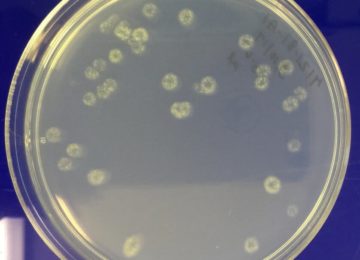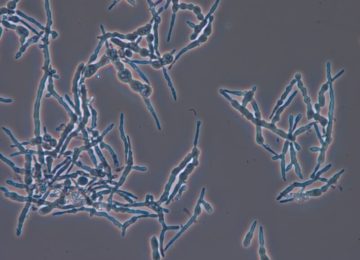

Protein Expression in Trichoderma reesei
Trichoderma reesei (T. reesei), recently re-classified as Hypocrea jecorina, a mesophilic filamentous fungus, is an attractive expression host for the production of recombinant protein. It’s one of the five protein expression systems offered by Bio-Technical Resources (BTR).
T. reesei strain RUT-C30 is one of the most widely used strains of filamentous fungi in protein secretion because of its extremely high yield, and its ability to grow in simple and low-cost media.
Recombinant protein expression technology continues to revolutionize all aspects of life and life sciences. Essentially, a gene encoding a protein of interest is expressed to produce the protein at a dramatically enhanced yield, and/or with greatly improved characteristics. Because of the native origin of the gene, particular applications of the protein and other considerations, it is critical to choose a suitable host for protein expression.
Want More Info?
Example of How Bio-Technical Resources Develops Strains & Processes for Protein Expression in Trichoderma reesei
BTR will develop your Trichoderma reesei expression strains and processes via a phased Development Program, to meet your present and future needs:
- Phase 1: Conduct a feasibility study using the selected host system – in this case, T. reesei – to generate strains and evaluate expression in shake flask cultures.
- Phase 2: If Phase 1 is assessed to be successful in meeting a minimal required expression level, best strains will be evaluated in bench-top fermentors of 1- or 14-L scales. Typically, much higher protein production levels can be achieved in fermentors under better-controlled growth and expression conditions at high cell density, than can be achieved in shake flasks.
- Phase 3: Optimization: construct and evaluate advanced strains to improve protein expression; develop an efficient fermentation process suitable for your POI; scale-up and demonstrate the process at BTR 14-L and 60-L or 250-L pilot scales; and finally prepare a Technology Transfer Package to support transfer of the strain and process protocols to your commercial fermentation facility.
For even more detail, including a look at the additional protein expression host systems we offer, view BTR Protein Expression Examples (PPT).
Trichoderma reesei Expression System Highlights
BTR provides strain development and protein expression services to many clients. Recent achievements include:
- High expression and efficient secretion of heterologous protein (POI, Protein of Interest) as functional enzymes were observed using the promoter and secretion signal peptide from the cellobiohydrolase I gene (CBH1) and a non-antibiotic selection marker. Compared to the untransformed host, density of the predominant band on SDS-PAGE (mostly the cellulase CBH1) was dramatically diminished while the band of fusion protein CBH1 core-POI became the major protein secreted into the media in shake flask cultures and in fermentation.
- High level POI production demonstrated in fed-batch fermentation at the 14-liter scale.
- Insertion of a proteolytic cleavage site between POI and its fusion partner allowed efficient in vivo processing of fusion proteins into POI.
Benefits of Trichoderma reesei Expression Systems
Several key traits of T. reesei give it great benefits as an expression system host.
- Due to its high natural capacity to secrete cellulases and hemicellulases, T. reesei is an important and widely exploited organism for production of industrial enzymes. It is well adapted to fermenter cultivations.
- Several protein products made in T. reesei have GRAS status from the FDA, meaning they’re approved for food and biopharmaceutical use. High level expression of therapeutic protein has been reported, such as insulin-like growth factor fusion protein at 19 g/L.
- Unlike E. coli systems, T. reesei is nonpathogenic, nontoxigenic, and produces no endotoxin.
New Developments in Trichoderma Applications
- T. reesei expression results in the production of enzymes capable of degrading plant cell walls, so biotechnology companies are using it for the saccharification of cellulosic plant biomass into simple sugars for biofuel production.
- Also in the biotechnology sphere, companies are researching the use of T. reesei as a low-cost production platform for biopharmaceuticals, such as interferons.
- The textile industry uses T. reesei to remove color from fabrics without damaging the fabric or machinery used in its production. One of the more common applications of this technology is stonewashed denim.
- The agriculture industry is using Trichoderma species to aid in plant growth and protection. For example, it’s shown to help certain crops maintain their nutrition when under salt stress.

